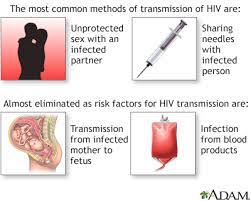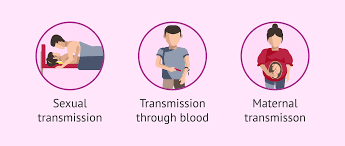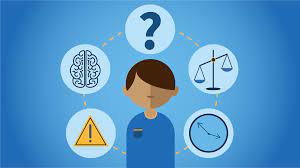What is AIDS?
AIDS stands for Acquired Immune Deficiency Syndrome. Aids is caused by a virus called Human Immune Deficiency (HIV). AIDS is the last stage of HIV contamination that happens when the frame's immune gadget is improperly damaged due to the virus. In the U.S., most people with HIV no longer develop AIDS because taking HIV remedies as prescribed stops the progression of the disease.

What is AIDS now called?
People with HIV do not constantly have AIDS. HIV is a virus this varies from person to person. Through the years, HIV destroys a critical form of the cell in your immune device (called CD4 cells or T cells) that enables shields you from infections.

What does AIDS seem like?
You would possibly have nighttime sweats, long-lasting fever, and diarrhea that lasts greater than every week. You can be worn out all the time and feature unexplained weight reduction. Purple or brown spots on your pores and skin, melancholy, and memory loss are also feasible.

this has now become the most dreaded disease for mankind there were an estimated 38 million people living with HIV at the end of 2020.
What are the Causes of AIDS?
Human immunodeficiency virus (HIV) is the virus that reasons AIDS. When someone becomes infected with HIV, the virus assaults and weakens the immune gadget. As the immune gadget weakens, the person is liable to get lifestyle-threatening infections and cancers. Whilst that happens, the illness is called AIDS.
Studies show that HIV may have jumped from chimpanzees to humans as far back as the late 1800s. The chimpanzee version of the virus is called the simian immunodeficiency virus. It was probably passed to humans when humans hunted these chimpanzees for meat and came in contact with their infected blood.
This virus damages cells in the immune system in the human body that fight off infections and diseases. This virus is spread through blood, semen, and vaginally discharges of an HIV-infected person.
It can also spread through unprotected contact with infected partners, use of infected needles, and from mother or child during pregnancy. AIDS cannot be spread through coughing, sneezing, or casual physical contact. Till now there is no cure for this fatal disease.

How HIV spreads?
To become infected with HIV, infected blood, semen or vaginal secretions must enter your body. This can happen in several ways:
· By having sex. You may become infected if you have vaginal, anal, or oral sex with an infected partner whose blood, semen, or vaginal secretions enter your body. The virus can enter your body through mouth sores or small tears that sometimes develop in the rectum or vagina during sexual activity.
· By sharing needles.
Sharing contaminated injection drug paraphernalia (needles and syringes) puts you at high risk of HIV and other infectious diseases, such as hepatitis.
· From blood transfusions.
In some cases, the virus may be transmitted through blood transfusions. Hospitals and blood banks screen the blood supply for HIV, so this risk is very small in the U.S. and other upper-middle-income countries. The risk may be higher in low-income countries that are not able to screen all donated blood.
During pregnancy or delivery or through breastfeeding.
Infected mothers can pass the virus on to their babies. Mothers who are HIV-positive and get treatment for the infection during pregnancy can significantly lower the risk to their babies.


What are the symptoms of HIV?
Symptoms, and how severe they are, vary from person to person. Some people will get symptoms and other people won’t. Symptoms change depending on what stage of HIV infection you are in.
There are three stages of HIV infection if it is not treated.
Stage 1
This happens after you are infected with HIV and can feel like flu. But not everyone will experience this. Symptoms can include:
· fever (raised temperature)
· rash
· sore throat
· swollen glands
· headache
· upset stomach or diarrhea
· joint aches and pains
· muscle pain.
Stage 2
This is when many people start to feel better. This stage may last for 10 years or more. During this time, you may have no symptoms.
Stage 3
This is when your immune system is very badly damaged and can no longer fight off serious infections and illnesses. You will feel very unwell. Symptoms can include:
· weight loss
· chronic diarrhea
· night sweats
· fever
· persistent cough
· mouth and skin problems
· regular infections
· serious illness or disease.

Risk Groups.
There are various groups through which HIV spread and causes severe damage to the immune system.
1. Sex workers
2. Transport workers
3. Health and care workers.
4. Military, police.

Diagnosis.
There are two ways through which we can diagnose AIDS.
· Direct tests.
Recombinant DNA techniques.
PCR
ELISA (Enzyme-linked immunosorbent serologic assay)
Viral isolation in culture.
· Indirect tests.
Lymph node biopsy
Lymphopenia
CD4 counts.

How AIDS and HIV are treated?
The most effective treatment for HIV is Antiretroviral Therapy (ART). ). This is a combination of several medicines that aims to control the amount of virus in your body. Antiretroviral medicines slow the rate at which the virus grows.
Antiretroviral therapy (artwork) is the treatment of humans infected with human immunodeficiency virus (HIV) using anti-HIV drugs. The usual remedy consists of a mixture of medicine (often known as "fantastically energetic antiretroviral remedy" or HAART) that suppresses HIV replication.
Currently, there are eight FDA-approved NRTIs: abacavir (ABC, Ziagen), didanosine (ddI, Videx), emtricitabine (FTC, Emtriva), lamivudine (3TC, Epivir), stavudine (d4T, Zerit), zalcitabine (ddC, Hivid), zidovudine (AZT, Retrovir), and Tenofovir Di isopropyl fumarate (TDF, Viredaz), a nucleotide RT inhibitor.
The people who have been treated with ART will need a treatment of 7 to 12 months approximately. It is to have an undetectable viral load. It is mandatory to take a pill of this medicine to maintain its regularity and durability status.
There are also many drugs and techniques which are essential for the treatment of AIDS and HIV. For instance,
Nucleoside reverse transcriptase inhibitor (NRTI)
Protease inhibitor (PI)
Fusion inhibitor (FI)
Highly active Antiretroviral therapy (HAART).
These treatments also have side effects. So, that it may be taken by the recommendations of the doctor.




You must be logged in to post a comment.